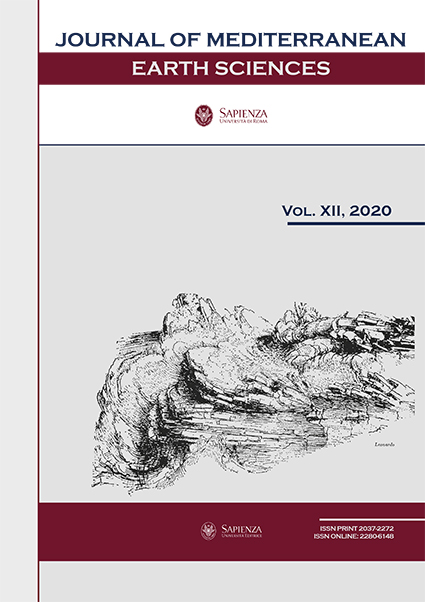Deadly accident in a turbiditic basin
DOI:
https://doi.org/10.3304/jmes.2020.17074Abstract
Rummaging through old papers, an occupation not uncommon for retired persons, I happened to find some black-and-white photos and my field notes, taken back in 1976, when I was following the field work of some of my students in an area located in the Central Apennines, in the Abruzzi region, where the Laga Formation, a turbiditic unit of Messinian age, crops out (Ricci Lucchi and Parea, 1973; Mutti et al., 1978; Centamore et al., 1993; Milli et al., 2007, 2019; Marini et al., 2015).
One of the students, Angiola Fesce, showed me two slabs of sandstone entirely covered by sole markings of biologic origin, so-called trace fossils or ichnofossils. She said: “You see? I found fossils!” (notice that the Laga Fm. is almost barren as it was deposited during the famous “salinity crisis” of the Mediterranean, in the upper Miocene). I told her: “Well, I taught you the difference between true (body) fossils and trace fossils (biogenic structures), and these are trace fossils, indeed”. But she put a finger on two spots, each no larger than a coin, and remarked: “What about these, what are they?” They were indeed body fossils, two echinoid skeletons not entirely preserved but well recognizable (see photos). Their location was at the end of the furrow that they themselves had made by reptating along a muddy bottom.
Those two animals, seven million years ago, were moving on a muddy bottom, probably in search of food, when they were suddenly covered by a turbid and turbulent cloud and buried under a layer of sand and mud. It was a turbidity current, not strong enough to sweep away the echinoid bodies, but loaded with sediment enough to bury them in a short time. They did not even try to escape upwards (no chance or time for it) and were suffocated on the spot.
Beside being of general interest, because of their rarity in the fossil record, finding the remains of an animal's body in the same furrow it dug on the seabed is something extremely rare (Frey, 1971; Monaco et al., 2005; Bernardi et al., 2010; Fatka and Szabad, 2011). The examples shown here are therefore worth mentioning because their interest is not merely local. From a regional point of view, it is curious that they come from an almost totally barren formation (apart from levels of reworked microfossils), as they accumulated in the Adriatic foreland during the Messinian salinity crisis. The basal portion of the Laga Formation, however, was deposited immediately before the salinity crisis and also before the anoxic event that preceded and accompanied it. The echinoids, in fact, could not have survived in waters devoid of oxygen and hypersaline; and it is just at the base of the Laga Fm., near Poggio Umbricchio village, that the layer with the tracks and fossils was found.
It was undoubtedly a lucky case, for two reasons: 1) The echinoid fossils shown here occur in a facies of large welded “amalgamated” sandstone beds, with basal surfaces that are not or barely visible, while the medium-thin, arenaceous-pelitic layers are relatively rare, and 2) they were found in an almost barren formation, where the rare fossils are normally reworked. Since I was not present on the outcrop, I can assume, as also suggested by Salvatore Milli, that the layer with the fossils rested directly on the pelitic substratum of the Laga unit, belonging to the Tortonian (pre-crisis) Pteropodi Marls, and the echinoids were caught by the first turbidity current that arrived there.
Downloads
Published
How to Cite
Issue
Section
License
The submission has not been previously published, nor is it before another journal for consideration (or an explanation has been provided in Comments to the Editor).


